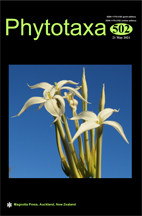Abstract
Due to large size and enormous morphological plasticity, the taxonomy of the genus Astragalus is very complex and challenging. The identification and grouping of species chiefly based on macromorphological characters become sometimes difficult in the genus. In the present study, the micromorphology of the seeds of 30 species belonging to 14 sections of Astragalus from India has been examined applying scanning electron microscopy (SEM) along with light microscopy (LM) to evaluate their role in identification and classification. Attention was paid to colour, shape, size and surface of seeds. The overall size of the seeds ranges from 1.5–3.2 × 0.8–2.2 mm. The shape of the seeds is cordiform, deltoid, mitiform, orbicular, ovoid and reniform. The colour of seeds varies from brown to blackish-brown to black. Papillose, reticulate, ribbed, rugulate and stellate patterns were observed on the seed coat surface (spermoderm) among different species. The study reveals that the seed coat ornamentations have evolved differently among species and do not support the subgeneric and sectional divisions of the genus. However, they add an additional feature to the individual species, which may help in identification in combination with other macro-morphological features.

